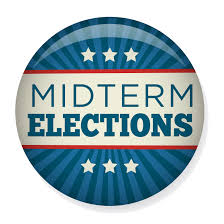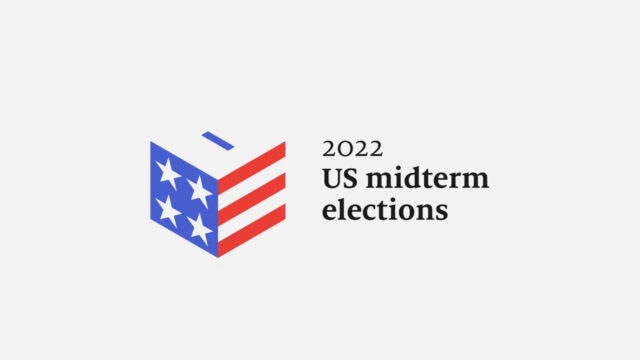A Comprehensive Guide to US Midterm Elections
Midterm elections happen every two years in the middle of a president’s term. These elections decide who will serve in Congress, including the House of Representatives and part of the Senate. People often don’t realize how important midterms are. These elections give voters a chance to make their voices heard on key issues and can change the balance of power in Congress.
Midterms are important because they shape the direction of government policies. If one party controls both the House and the Senate, they can push through more laws that align with their beliefs. But if control is split between two parties, compromises are needed to pass laws. This is why midterms are seen as a check on the president’s power.
Voter turnout for midterms is usually lower than in presidential elections, but that doesn’t mean they are any less important. In fact, midterm elections often have a big impact on the country’s future. Understanding how midterms work is crucial for anyone who wants to participate in the political process and have a say in government decisions.
The Role of Congress in Midterm Elections
Congress is made up of two parts: the House of Representatives and the Senate. During midterm elections, all 435 seats in the House are up for election, and about one-third of the 100 Senate seats are as well. This means that midterms can change the makeup of Congress.
The House of Representatives is where laws usually start. If a party has the majority in the House, they have a better chance of passing the laws they support. In midterms, voters decide who will represent them in the House for the next two years. The Senate plays a key role in approving laws and confirming presidential appointments, such as judges. Each senator serves a six-year term, so only about a third of the seats are up for grabs in any midterm election.
The outcome of midterms can change which party controls Congress. If the president’s party loses control of either the House or the Senate, it becomes harder for the president to pass laws. This is why midterms are sometimes called a “referendum” on the president’s performance. Voters can use their votes to show whether they support or oppose the current government.
Key Issues in Midterm Elections
The issues that matter in midterm elections vary from year to year, but some common themes often emerge. These include the economy, healthcare, taxes, immigration, and national security. What voters care about can change based on what’s happening in the country at the time.
For example, if the economy is struggling, voters might focus on jobs and taxes. If healthcare costs are rising, people may vote for candidates who promise to lower those costs. Immigration can become a big issue if there are debates about border security or how to handle immigrants who are already in the country.
National security is another issue that can influence midterms, especially if there are concerns about threats from other countries or terrorism. Candidates will often campaign on these issues, trying to convince voters that they have the best solutions.
Midterm elections can also be a time when local issues come to the forefront. Voters may be concerned about things like education, infrastructure, or crime in their communities. Candidates for the House and Senate will tailor their campaigns to address the specific needs and concerns of their voters.
How Voting Works in Midterm Elections

Voting in midterm elections is similar to voting in presidential elections. Registered voters go to polling places, mail in their ballots, or vote early in person. However, each state has its own rules about how voting works, including deadlines for registration and how to cast a ballot.
To vote in midterms, you must be a U.S. citizen, at least 18 years old, and registered to vote. Some states allow same-day registration, while others require you to register weeks before Election Day. Voting by mail has become more popular in recent years, making it easier for people who can’t make it to the polls on Election Day.
Early voting is another option in many states. This allows voters to cast their ballots before Election Day, which can be convenient for people with busy schedules. It also helps reduce long lines at polling places on Election Day.
Once the votes are cast, they are counted, and the winners are announced. In some cases, the results can take a while, especially if the races are close. If no candidate gets a majority in a Senate race, a runoff election might be held, where the top two candidates face off again.
Midterm Election Campaigns
Candidates running in midterm elections spend months preparing and campaigning. They try to connect with voters by holding rallies, participating in debates, and sharing their views on important issues through ads, social media, and interviews.
Campaigns are often expensive. Candidates raise money from donors to pay for things like TV ads, flyers, and staff to help get their message out. How much money a candidate raises can sometimes impact their chances of winning. Some candidates get support from their political party or from outside groups called Political Action Committees (PACs) that raise money for them.
Candidates will often focus their campaigns on “swing” voters or undecided voters, who can make the difference in close races. They may also work to increase turnout among their base of supporters, encouraging them to vote.
Campaigns are about more than just raising money and giving speeches, though. Candidates need to listen to voters and address their concerns. A strong campaign will reflect the values and priorities of the people the candidate hopes to represent.
The Impact of Midterm Elections
Midterm elections can have a big impact on government policies and the direction of the country. If one party gains control of Congress, they can pass laws that reflect their political views. For example, if a party that supports lower taxes gains control, they might push for tax cuts. If a party that focuses on healthcare takes control, they may work to expand healthcare coverage.
Midterms also impact the president’s ability to get things done. If the president’s party loses control of Congress, it becomes harder to pass laws. This is called a “divided government,” where the president belongs to one party, and the majority of Congress belongs to the other. A divided government often leads to gridlock, where little gets done because the two sides can’t agree.
The results of midterm elections can also impact the next presidential election. If a party does well in midterms, it can build momentum heading into the presidential race. On the other hand, if a party loses badly in midterms, it might signal that they need to change their approach before the next election.
Conclusion: Why Midterms Matter
Midterm elections may not get as much attention as presidential elections, but they are just as important. They give voters a chance to influence the direction of the country and hold elected officials accountable. By understanding how midterms work and why they matter, voters can make informed decisions that impact the future of their communities and the nation.
Participating in midterm elections is a way for everyone to have their voice heard, regardless of party or beliefs. Voting is one of the most important ways to shape the future, and midterm elections are a key part of that process.










